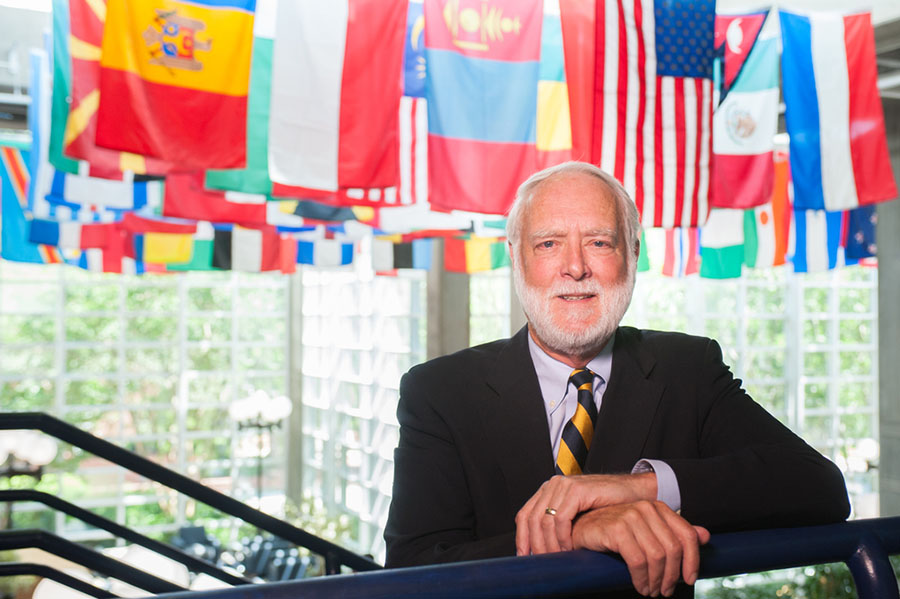
 |
| Secretary Emeritus of the Smithsonian Institution and Georgia Tech President Emeritus G. Wayne Clough is a member of the civil engineering faculty. |
By Maureen Downey
The Atlanta Journal-Constitution
When G. Wayne Clough became president of Georgia Tech in 1994, the first alumnus to hold the title, a belief remained that the school’s chief purpose was to produce capable engineers. He recognized that Tech’s mission and vision needed to be bigger, deeper and wider.
“It can’t be 100% engineers and be successful,” he said. “If you took in all engineering students, it would be bad for the student, bad for the school and bad for the whole system,” he said.
Clough also understood that it no longer served Tech to lionize a tale from his era as a student in which a dean warned freshmen, “Look to your left, look to your right; only one of you will graduate.”
During his tenure, Clough learned students were not leaving because they flunked out. The majority were, in fact, doing fine; they just didn’t like Georgia Tech. An attitude remained at Tech, he said, that “it should be intentionally hard to graduate from this school, even if the difficulty has nothing to do with academics.”
In his 14 years as president, Clough oversaw an expansion of academic endeavors, a resetting of institutional priorities and a new focus on bioscience and biotech. He also witnessed the transformation of the student body and the bleak stretch of Midtown surrounding Tech’s campus.
“Many parents don’t recognize the changing demographic in the state of Georgia. We used to keep track of student names, and the most common in freshman class were Jones and Smith. It later became Lee and Singh,” said Clough. “Every now and then, a parent would come up after graduation and said they really loved it, but how come you have all these foreign students? I told them they weren’t foreign students. They were born in Chamblee.”
(Clough also said Tech’s commitment to admit some international students benefits the campus. “It is good for a kid like me who grew up in Douglas, Georgia, to meet a kid who grew up in Thailand.”)
All those innovations, which Clough details in a new book, “The Technological University Reimagined,” propelled Tech from a respected regional engineering school to an elite campus routinely ranked in the top 10 public universities. The student population increased from 13,000 to 19,000, and funding for external research more than doubled. Clough promoted study abroad, uplifted the humanities, public policy and the social sciences and offered up his own expertise and that of faculty to mayors, governors and presidents, enhancing Georgia Tech’s stature and its role in policy decisions.
With stints at Duke, Stanford, Virginia Tech and the University of Washington, Clough arrived two years before Georgia Tech would serve as the Olympic Village and the site of boxing, swimming and diving competitions. Agreements were already in place to build new buildings and venues. “We thought we were going to get funded, but were never quite sure,” said Clough. (Out of the $233 million spent on Tech for the Olympics, Clough said Tech put up $160 million of it, nearly 70%.)
The Olympic agreement included athlete housing that would then become seven new residence halls, enabling Tech to be more of a residential university than a commuter one, said Clough. The Olympics spurred the end of the troubled and crime-plagued Techwood Homes and the construction of Centennial Place, a mixed-income community for which Clough credits federal housing grants and the vision of Renee Glover, then executive director of the Atlanta Housing Authority.
During his time teaching civil engineering at Stanford, Clough saw firsthand the role the campus played in the rise of Silicon Valley. “I saw what a university could really do to connect to the community, if it puts its mind to it,” he said.
Related:
- The Reimagining of Georgia Tech
- The Technological University Reimagined: Georgia Institute of Technology, 1994-2008
- G.Wayne Clough
